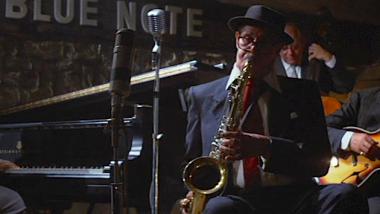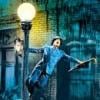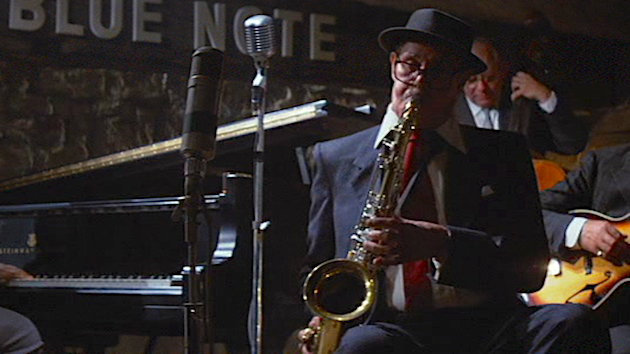
The deeply intertwined relationship between jazz and Hollywood existed long before that landmark 1927 talkie, The Jazz Singer, a film that actually contains little music that can be construed as jazz. Live musical accompaniment in early movie houses was often provided by erstwhile jazz musicians, like pianist/composer Fats Waller, who started playing the pipe organ in Harlem’s Lincoln Theatre as a teenager back in 1919. Enamored with movement, drama, and tension and release, jazz and cinema were both born in the United States in the early years of the 20th century, and came to exemplify the nation’s cultural ascendance. Two recent books examine the ways in which the art forms interact with each other, but through decidedly different lenses.
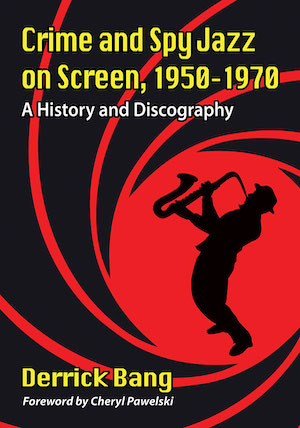 Derrick Bang, a writer best known in jazz circles for his fine 2012 biography on the widely popular but under-appreciated Bay Area pianist/composer Vince Guaraldi, has compiled the smart and wide-ranging history and discography Crime and Spy Jazz on Screen, 1950–1970. It’s part reference work and part road map, providing a telegraphic study into jazz’s emergence as an essential part of film and television’s musical syntax. Focusing on scores characterizing the demimondes of “secret agents, private detectives, cops, spies, and heist-minded criminals,” he takes it as a given that jazz’s flexible pulse and brass-driven cadences can accentuate these shadowy realms.
Derrick Bang, a writer best known in jazz circles for his fine 2012 biography on the widely popular but under-appreciated Bay Area pianist/composer Vince Guaraldi, has compiled the smart and wide-ranging history and discography Crime and Spy Jazz on Screen, 1950–1970. It’s part reference work and part road map, providing a telegraphic study into jazz’s emergence as an essential part of film and television’s musical syntax. Focusing on scores characterizing the demimondes of “secret agents, private detectives, cops, spies, and heist-minded criminals,” he takes it as a given that jazz’s flexible pulse and brass-driven cadences can accentuate these shadowy realms.
This delightfully sordid, easily spoofed cinematic marriage between jazz, tough guys, and dangerous dames wasn’t fully consummated until some two decades after the advent of the swing era in the mid-1930s, when jazz reigned as America’s popular music, a lag that Bang accepts more than questions. Designed less for front-to-back reading than casual perusing, Crime and Spy Jazz doesn’t make an overarching argument about whether or how jazz’s entanglement with the silver screen shaped the music’s evolution. He doesn’t spend much time trying to define specific musical characteristics that might set “crime-and-spy jazz” apart from other jazz idioms. He’s far more interested in apportioning credit to pioneering composers like Elmer Bernstein, Henry Mancini, Alex North, and Johnny Mandel for scores that broke the stranglehold of the European emigres who defined the sound of Hollywood’s golden age with their sweeping, orchestral Romanticism.
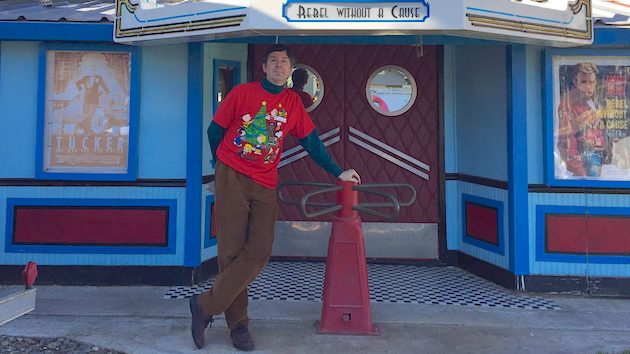
An assiduous researcher who casts an exceptionally wide net, Bang doesn’t just plumb Hollywood’s output. He also takes in Italian, French new wave, and British films featuring jazzy scores, offering insider details of how the composers and musicians ended up on the gig. Some of this is well-trod ground, like Louis Malle’s 1957 collaboration with Miles Davis on his debut film Ascenseur pour l'échafaud (Elevator to the gallows). “As an isolated listening experience these 26 minutes of music are positively haunting,” Bang says. “As employed in Malle’s film, they’re not much of a score.” Other passages offer intriguing viewing tips, like the obscure 1958 Argentine film directed by Fernando Ayala, El jefe (The boss). A crime gang tale that’s a thinly veiled political allegory about Juan Perón, the film features “an excellent jazz score” by newcomer Lalo Schifrin.
But when it comes to music lost to the thick, back-alley fog of time, Bang shows his true colors as a sleuth in dozens of entries on mostly forgotten television series. Indeed, it’s Bang’s work unearthing the early composers for television that sets Crime and Spy Jazz apart from other books about jazz and film. Without explicitly arguing it, he shows that it was television that tied jazz and crime together, not film noir, which had already crested as a cinematic phenomenon in 1951 when Alex North’s sweltering score for A Streetcar Named Desire demonstrated how effectively jazz instrumentation and voicings could comment on and accentuate the seething emotions on screen.
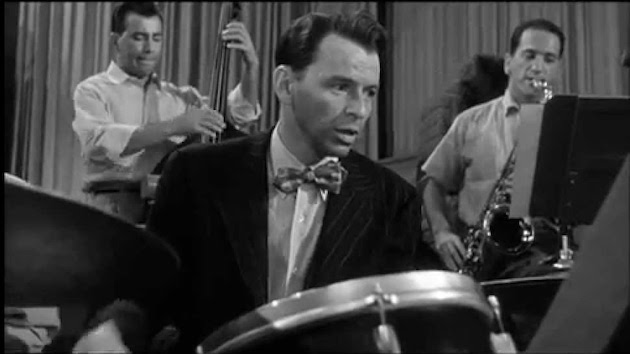
Most of the classic noirs, from 1944’s Murder, My Sweet and 1946’s The Killers to 1947’s Nightmare Alley and 1951’s In a Lonely Place were set to traditional Hollywood scores (well, George Antheil’s jittery, brooding music for In a Lonely Place wasn’t exactly traditional). By the time Elmer Bernstein created his fever-dream jazz score for 1955’s The Man With the Golden Arm, and Mancini wrote the bodacious rock ’n’ jazz brass and percussion settings for 1958’s Touch of Evil, the small screen had comfortably incorporated jazz. Starting with Charles Paul’s theme for NBC’s 1949 series Martin Kane, Private Eye, early television offered a flood of detective and crime shows like Crime Photographer, Pete Kelley’s Blues, and Peter Gunn, which spawned a hit album that sold more than a million copies. No less a jazz eminence than Count Basie recorded the theme for the Lee Marvin vehicle M Squad, which ran from 1957–1960. As is so often the case, the story of jazz’s triumph is most interesting in the early years. As Bang guides us through the thicket of jazz cues and themes, motives, and underscores, it’s hard to keep track of what matters most. His emphasis on broad coverage rather than deep dives into particular works results in an almost overwhelming torrent of names and dates. Taken in measured doses, Bang’s brew offers a pleasurable buzz. After 20 pages, I often felt a little punch drunk.
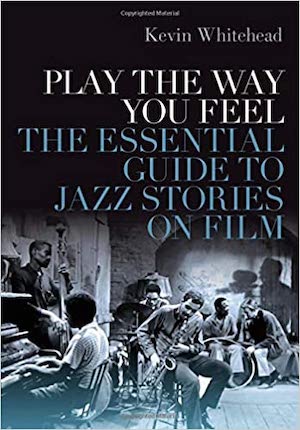 If Bang is the hedgehog who knows one big thing about jazz’s utility as sonic shorthand for communicating an intricate matrix of attitudes regarding primal human urges, Kevin Whitehead is a fox who discerns many overlapping ideas about jazz’s heavily freighted, racially charged identity in America’s cultural imagination. His book Play the Way You Feel isn’t interested in the relatively late adoption of jazz in film scores. He’s got a more specific and complicated agenda.
If Bang is the hedgehog who knows one big thing about jazz’s utility as sonic shorthand for communicating an intricate matrix of attitudes regarding primal human urges, Kevin Whitehead is a fox who discerns many overlapping ideas about jazz’s heavily freighted, racially charged identity in America’s cultural imagination. His book Play the Way You Feel isn’t interested in the relatively late adoption of jazz in film scores. He’s got a more specific and complicated agenda.
“How do movies tell stories about jazz and jazz musicians?” he asks in the introduction. “Not just what they get right, or wrong, but how they tell it: jazzy, or not? And if so, how is that jazziness conveyed?” In other words, how have movies told stories about jazz musicians, and what role has the music played in those narratives? Given that we’re talking about an art form created and largely defined by African-Americans, and that Hollywood rarely took a vanguard position in the struggle against white supremacy, the foregrounding of white characters in the creation and evolution of jazz is one thread running through this consistently engaging book.
If you’re familiar with Whitehead’s work as jazz reviewer for NPR’s Fresh Air, you can hear his voice, drily amused, witty, and deeply informed, delivering his prose. The title comes from a line of dialogue that Whitehead gleans almost verbatim from at least a dozen films spanning more than half a century. The idea that authentic jazz is a vehicle for unbridled self-expression, that you need to play the way you feel, is another theme (or cliché) that he traces through various incarnations.
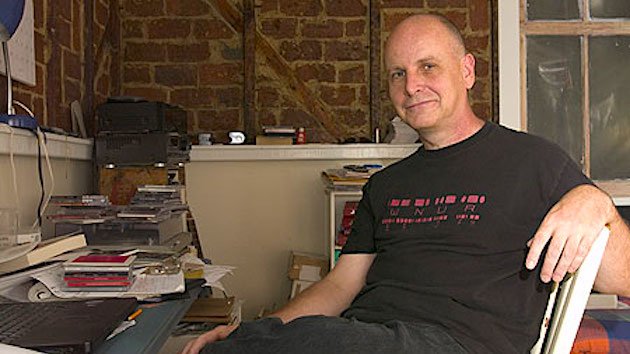
Deeply versed in film history, Whitehead captures the way that plots echo each other in an ongoing conversation, much like every tenor saxophonist who plays “Body and Soul” contends with landmark recordings by Coleman Hawkins and John Coltrane. Sifting through the credits, he often calls attention to actors cast in similar roles, or even an art director who carried a décor theme from one film to the next.
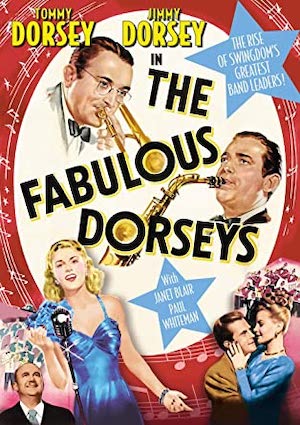
His keen eye for details usually serves his larger aim, which is examining how cinematic stories about jazz musicians speak to larger themes that preoccupied American society, particularly the music’s disruption of old-world traditions (or sacred obligations) and the conflict between art and commerce. Focusing on filmic storytelling means that Whitehead spends a lot of time summarizing plots, which is the book’s weakness. Analyzing how biopics like 1954’s The Glenn Miller Story or 1947’s The Fabulous Dorseys depart from reality can be interesting, but detailing the romantic tangles portrayed in films about band dynamics (chapter 3, “Band of Brothers 1941–48”) doesn’t make for scintillating reading.
Whitehead is at his best in chapters unpacking the way Hollywood portrayed the music’s birth and evolution (chapter 2, “Origin Stories”). His account of 1929’s St. Louis Blues, a vehicle for blues matriarch Bessie Smith set to W.C. Handy’s classic song, describes how the action mimics Handy’s description of composing the piece. “On the one hand, the collective wisdom of the community gives the music its cumulative power,” Whitehead writes. “On the other hand, all the instrumentalists have sheet music; this particular blues is available for sale from Handy Brothers Music Co.”
Just as he captures the way films speak to each other through the years, Whitehead engages in fruitful dialogue with fellow scholars, particularly Krin Gabbard’s insightful but often polemical 1996 book Jammin’ at the Margins: Jazz and the American Cinema. In discussing 1941’s Birth of the Blues, which tells a tale loosely based on the commercial breakthrough of the Original Dixieland Jass Band (the white New Orleans combo that made the first jazz recordings in 1917), Whitehead describes the Bing Crosby and Jack Teagarden vehicle as “historically spotty, racially problematic, and poorly regarded; Krin Gabbard denounces its ‘startling naïveté and unrepressed racism.’” Whitehead doesn’t argue against Gabbard, but he does take a few steps back. “It’s less about the birth of jazz than its introduction to white audiences as something worth their attention: the story of how jazz became, as Bing puts it in the final scene, ‘everybody’s blue music.’”
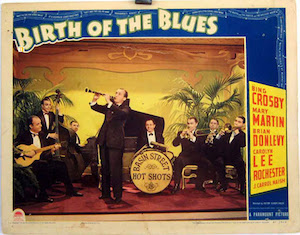
Whitehead often gives films a generous reading. As we see every day, it’s all too easy to identify the shortcomings, flaws, and defects in our ancestors. Whitehead looks for the humanity in interactions, rather than reducing characters to racial cyphers. An early scene in Birth of the Blues finds a precociously talented white boy welcomed into an informal jam session with African-American musicians.
Whitehead writes often about the Hollywood trope of Black musicians offering musical benedictions to white players, but he sees another possibility in this scene, where “established musicians graciously extend a hand to a cocky newcomer, encouraging his own voice, recognizing in his bratty bravado a familiar need to play. (Jeff’s brattiness will pass; as an adult his persona will be so cool, he’ll be played by Bing Crosby.) The musicians accept him in a spirit of fellowship that transcends race and age.” A discerning critic, he often takes films to task for stylistic or publishing anachronisms, with characters playing songs before they were written or in a style unsuitable or unavailable for the era. This sometimes feels persnickety, but he’s often making a larger point, either about jazz’s evolution or storytelling itself.
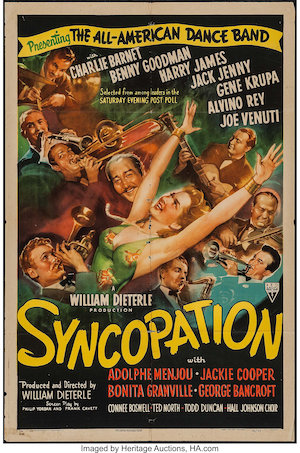
Among the surprises Whitehead offers is that as early as 1942, Hollywood offered a fairly accurate description of jazz’s origins. In RKO’s Syncopation, the William Dieterle-directed tale “establishes that jazz has roots in West Africa, and its line of derivation came through slave songs and spirituals,” Whitehead writes. “It also lays out that whites learned to play it listening to Black singers and musicians, that it was linked to dancing.” There are some odd omissions, particularly the biopics on female artists like Ruth Etting (1955’s Love Me or Leave Me). And Whitehead’s backhanded dismissal of Some Like It Hot as a gender-switching comedy worthy of Shakespeare may make one doubt his comedic taste (though he defends the musicianship of Sweet Sue and her Society Syncopators).
What’s most surprising is the realization that starting with Francis Ford Coppola’s frustrating 1984 failure The Cotton Club, there was burst of impressive films centered on jazz, including Frank Gilroy affectionate and underappreciated 1985 ode to jazz amateurs, The Gig, and Bertrand Tavernier’s exquisite 1986 vehicle for Dexter Gordon, Round Midnight, which earned the tenor sax legend a best-actor Oscar nomination. He offers measured praise and due criticism for Clint Eastwood’s ambitious 1988 Charlie Parker biopic Bird, which stumbles into some of Hollywood’s hoary pitfalls. “We’ve noted this spotlighting of white characters in Black stories before, as if white viewers need white characters to identify with,” Whitehead writes. “But resorting to that expedient here clashes with bebop’s rejection of white show-biz convention.”
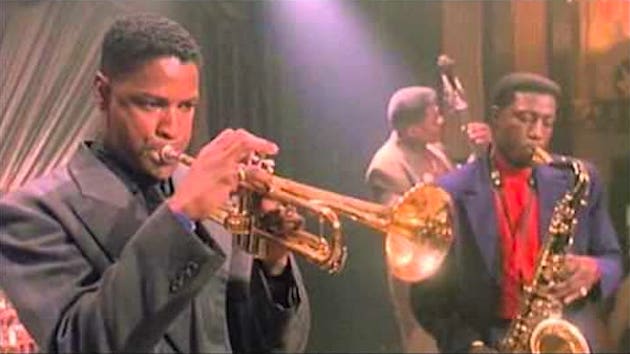
This burst concludes with Spike Lee’s 1990 cautionary tale about the jazz life Mo’ Better Blues, the film that sparked one of cinema’s great composer/director pairings through trumpeter Terence Blanchard’s work coaching Denzel Washington’s moves as horn player Bleek Gilliam. The son of veteran jazz bassist Bill Lee, Spike brings an insider’s knowledge to the world of jazz, though Whitehead notes that he still indulges in some ethnic clichés.
As he follows Hollywood’s jazz stories into the 21st century with dueling Miles Davis and Chet Baker biopics and Damien Chazelle’s oeuvre, Whitehead makes it clear that old wine keeps getting decanted into new bottles as artists on screen struggle for authenticity, battle for approval from parental figures, or contend with the hazards of success. I came away with a long list of films I want to see, and fresh eyes for movies that I’m looking to experience again.
Books reviewed:
Crime and Spy Jazz on Screen, 1950–1970, Derrick Bang (McFarland, $45 soft cover)
Play the Way You Feel: The Essential Guide to Jazz Stories on Film, Kevin Whitehead (Oxford University Press, $34.95)

